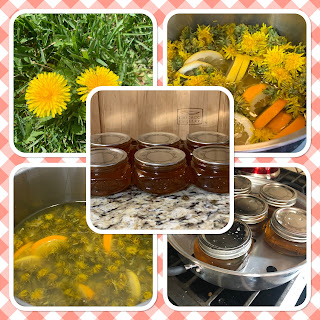Folks, canning supplies were in high demand last year to the point we could not get jars or lids in our little corner of southwestern Ontario. Our main sources are Home Hardware, Canadian Tire, Dollarama (lids only), Walmart and most grocery stores. This was the first time I wasn't able to find jars but it was an odd year. Now, I am a high volume home canner who cans year round averaging about 1,000 jars annually. I have a very good supply of jars but what happens is some of those jars are gifted and while most of them make their way back, I lose a few each year. Due to current restrictions, I'm down about two cases.
In Canada, we have three jar mouth sizes:
- Standard - 70 mm
- Gem - 78 mm (very popular in our prairies), BTW, this size can be found under brand names like Imperial and Canadian Jewel but the size is always referred to as Gem
- Widemouth - 86 mm
Jars:
- Bernardin, formerly Canadian owned is the best known and trusted brand in Canada. I have the old Imperial pints and quarts as well as the new metric L, 500 ml, 250 ml etc. Golden Harvest jars are available. Back for y2K Home Discovery was available. And there are numerous older brands still available used.
- Know your local prices! Many resale venues are selling jars for well over their price new.
- Buy ahead. Yes you don't need 4 cases of jars right now but if you can't get them later you will be patting yourself on the back.
- Put the word out. Networking is key to finding jars and there's always jars available given that each year some folks give up canning. It's all about asking around and chances are they will give you the jars free for a filled jar of jam or salsa.
Lids: You can have all the jars possible but the barrier will always be the availability of lids.
- The most popular and heavily promoted lids are the single use metal snap lids. This is a metal disc that uses a metal band during the canning process. Both bands and snap lids are available for all three sizes. The ping tells you it sealed. Some of the rebel canners are reusing these lids out of necessity. My concern would be seal failures.
- Glass inserts - Glass inserts require a rubber ring (Vicroy) and special metal (not the old zinc) bands to use. The rubber bands are still easily available. These reusable lids are a must. They are available for standard and Gem widths.
- Glass shoulder lids - These are considered an antique, fitting the old Corona, Crown, Imperial and similar jars. I have oodles of them for dry storage. The rubber rings are available but my opinion is these jars should not be used in a pressure canner. I'm iffy whether to use them in the steam/WB canner. However, they are excellent for dry storage.
- Tattler reusable lids - Tattler's are amazing and I have 10 doz. These are reusable plastic BPA free discs with rubber rings. There's a different methods like the glass inserts so a learning curve. The only problem I have with Tattler's at the moment is they aren't shipping to Canada. I did find them on Amazon.ca but the reviews were not good as apparently the ones being sold aren't the real macoy. However, if you have someone in the US they could send them to you. Stock up on the rubber rings because they will be at some point the limiting factor. You should be able to get 7-10 uses per ring and rings are very inexpensive.
- prices: By far, Dollarama is the best price for snap lids, more expensive than last year but still the best price. Their price has increased to $2.50 per box of lids so at 21 cents is still the best price. You can order a case lot on line but have to pay for shipping which would increase the overall price to 29 cents per lid. Still, delivery to your door is not a bad deal. Stay away from Amazon.ca for lids at 81 cents per lid. The next best are Walmart/Uline (26 cents per lid), and Home Hardware, Canadian Tire (33 cents per lid)
- My opinion: Learn how to use the reusable lids even if you only use them for high acid foods. If you are a high volume canner, it is the only way to go. Aim for 10 dozen pllus extra rings. Hands down, this is your best hedge to being able to home can. Be sure to stock up on the rubber rings. Buy a package every time you get a chance. Stock up on snap lips as you will want to gift some of your goodies. If you are high volume, 300 lids seems to be the amount most home canners are going for.
Pectin:
- I use Pomona's pectin. I stock up when in the US but it is available in Canada at a rather inflated price but it really is the best. It's non-GMO and shelf stable indefinitely. I'm getting reports of Certo brand not setting properly but that could be a bad batch. The biggest problem with the other pectins is availability. Last year, after June you could not find pectin anywhere.
- green apples - if you have a source for green apples, you can make your own pectin and this is what I would consider a useful skill to learn.
- long cook - Many fruit jams can be made using no pectin but rather the long cook method. Honestly, a very useful skill to learn! Basically the fruit/sugar mixture is cooked to gel stage (220 degrees F) then bottled.
Clear Jel:
- Clear Jel is the only USDA approved thickener for pie fillings. I buy mine in the US but if you are lucky you can find it on Amazon.ca at a greatly inflated price.
- My opinion: If you are buying Clear Jel for a couple of jars of apple pie filling, don't. If you want to can stews, gravies, etc. then yes. There are a few recipes out there using flour for tomato soup rather than Clear Jel. I've had wonderful results using that. I typically use Clear Jel for stews, pie fillings and gravies BUT there are other ways to do it.
Equipment:
- pressure canner - If you are considering buying a pressure canner, buy All American that does not require a gasket. Folks have already sounded the alarm at not being able to find a gasket for their pressure canner. Without a gasket, you cannot pressure can low acid foods but there are old school long boil methods. These methods are not USDA approved but it's your kitchen, your rules. And, I am well acquainted with many Amish families who put up all kinds of foods without a pressure canner. My opinion is the USDA is another arm of government control without rhyme of reason sometimes.
- steam canner - Now available at a decent price on Amazon.ca. This handy device replaces your waterbath canner. It is about $70 CDN but well worth the price in time, fuel and water savings.























